-
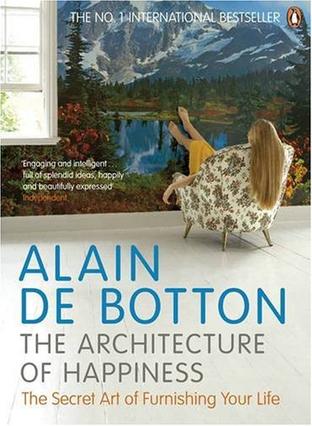
The Architecture of Happiness
Bestselling author, Alain de Botton has written about love, travel, status and how philosophy can console us. Now, he turns his attention to one of our most intense but often hidden love affairs: with our houses and their furnishings. He asks: What makes a house truly beautiful? Why are many new houses so ugly? Why do we argue so bitterly about sofas and pictures - and can differences of taste ever be satisfactorily resolved? Will minimalism make us happier than ornaments? To answer these questions and many more, de Botton looks at buildings across the world, from medieval wooden huts to modern skyscrapers; he examines sofas and cathedrals, tea sets and office complexes, and teases out a host of often surprising philosophical insights. The "Architecture of Happiness" will take you on a beguiling tour through the history and psychology of architecture and interior design, and will forever alter your relationship with buildings. It will change the way you look at your current home - and help you make the right decisions about your next one. -
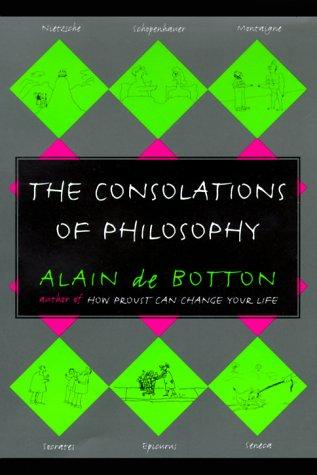
The Consolations of Philosophy
-

我愛身分地位
每個成人的人生可說都是以兩種愛為主軸。第一種愛──對兩性之愛的追求──早已廣為流傳與記載。第二種愛──對身分地位的追求──則較為私密,而且過程充滿羞辱。然而,第二種愛的強度卻毫不遜於第一種。」 無論古今東西,身份地位如此誘人,芸芸眾生競相追逐。 在這樣孜孜以求的背後,隱藏著一種極少人能夠坦然承認的「地位焦慮」:顧慮別人如何看待自己,顧慮自己在別人眼中究竟是成功還是失敗。而依附權貴、鑽營投機、為了妝點門面而過度消費,都是典型的症狀,造成人們晚上輾轉難眠。 艾倫•狄波頓以他一貫的生花妙筆,援引思想家、藝術家及作家的觀點與行徑,帶領我們抽絲剝繭,探索地位焦慮的根源。不僅如此,為了讓我們抒解心中的焦慮,狄波頓還精心提供了一道道奇特的妙方:效法古希臘哲人和波希米亞文化人,或者看看諷刺漫畫,甚至觀賞廢墟的石塊、在櫥櫃上擺設骷髏頭……。 翻開本書,傾聽狄波頓風趣睿智的分析及忠告,讓我們免去追求身分地位之苦,享受生活的甜美與平靜。 -
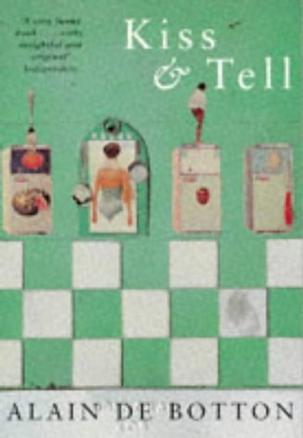
Kiss and Tell
Amazon.com Alain de Botton has crafted a delightfully ingenious novel in the form of a biography of an unknown woman. Told by a former flame that he lacks empathy, the engaging narrator of Kiss & Tell decides to write a book about the next person he meets. This turns out to be Isabel Rogers, a production assistant at a London stationery company. The sincere effort of this would-be Boswell to make this ordinary woman fascinating cause him to fall in love with her, causing a shift in his writing from an examination of Isabel's life to a minutely-detailed account of his relationship with her. Alain de Botton's earlier work, The Romantic Movement, garnered praise from John Updike and Pico Iyer, who called him "a Stendhal of the 90's dating scene." --This text refers to an out of print or unavailable edition of this title. From Publishers Weekly "Dental work on," "first kiss" and "new hairstyle" can all be found under the index entries for Isabel Rogers, the charming, unsuspecting subject of this diverting fictional biography. De Botton plays a nimble game, through the eyes and idiosyncrasies of his smart, pretentious narrator. Looking for an opportunity to explore the nature of biography without being overshadowed by his subject, the narrator attaches himself to a woman he thinks will be mundane enough to be fully mastered. To play off the appealing if thoroughly normal Isabel, de Botton (The Romantic Movement) makes his narrator as fastidious as any of Nicholson Baker's and as smarmily self-absorbed as one of Martin Amis's. But the ordinary details of Isabel's ordinary life?she is 28, a production assistant in London?prove more than enough to handle, and the narrator, who likes to quote Dr. Johnson and Richard Ellman, finds that the high-brow rigors of formal biography have to make concessions to the unruliness of lived life. Inevitably in this comic relationship, the narrator digresses too often, experimenting with handwriting analysis, palmistry and psychiatric questionnaires before he realizes that he is missing a very different kind of understanding of Isabel. Deftly, de Botton manages to flesh out the character of Isabel within the parameters of what is?in every sense?his narrator's pseudo-intellectual conceit. In the manner of Carol Shield's The Stone Diaries, photos of "Isabel" and her family add a droll touch. Copyright 1996 Reed Business Information, Inc. --This text refers to an out of print or unavailable edition of this title. From Booklist After an ex-girlfriend accuses the narrator of being a narcissist, he decides to find out as much as possible about the next person he meets. Fortunately she, in the form of Isabel Jane Rogers, proves to be a woman of many layers. Intrigued by the biographer's mission, the unnamed narrator plunges into Isabel's life, creating a laundry list of minutiae--such as how she learned to make the figure 8, her first bubble bath, candies eaten as a child, and how she cleans her apartment to The Best of Blondie music--all to gain insight, reformulate prejudices, and grow empathic. Along the way, he consults other biographies for direction. An index (unusual in a fictional work) draws out details from the lives of Samuel Johnson, Marcel Proust, and James Joyce, among others. Readers who enjoy biographies must not miss Kiss & Tell. It provides insight into the genre while also presenting bit by nonchronological bit the ordinary albeit captivating life of Isabel Jane Rogers. Jennifer Henderson --This text refers to an out of print or unavailable edition of this title. From Kirkus Reviews A young, self-centered British swain vows to get to know the next woman he meets better than she knows herself, in de Botton's self-consciously coy follow-up to On Love (1993) and The Romantic Movement (1995). ``It took me a long time to . . . understand how someone could have been so un-self-aware and at the same time so self-obsessed,'' reads the narrator's most recent Dear John letter. ``You said you loved me, but a narcissist can't love anyone but himself.'' Miffed by the accusation, de Botton's intellectual hero determines not just to pay more attention to the next woman he meets but to immerse himself in her life as assiduously as a biographer studies his subject. Ordinary as that randomly picked woman turns out to be--pretty, 25-year-old Isabel Rogers is a production assistant for a stationery company--our hero earnestly commits to paper every thought she expresses, every casual mannerism, every minor anecdote about her childhood, in the hopes of proving himself worthy of love. At first, Isabel is flattered by such attention, though she wisely attributes her biographer's attentions to ordinary lust. As the months pass and the narrator charts Isabel's ancestral tree, challenges her with personality quizzes, and gravely ponders such inscrutable utterances as ``I know I should read more, but TV is easier. I should love people who are nice to me, but grumps are more of a challenge . . . I want to have babies, but I'm frightened of becoming my mother,'' he increasingly gets on her nerves- -proving, inevitably, that too much attention can be as irritating as too little. ``And I think we should stop seeing one another as well,'' Isabel continues. ``But unfortunately I can't be sure about that either. I don't know any more, all right?'' Having stuck with this one-joke plot that is, like its narrator, amusing and tedious by turns, readers will understand her fond impatience all too well. -- Copyright ©1996, Kirkus Associates, LP. All rights reserved. --This text refers to an out of print or unavailable edition of this title. Review "Original, intelligent, and beguiling . . . You will get more than pure pleasure from reading...you may never again look at biography in quite the same way."—Jonathan Yardley, The Washington Post Book World "This ingenious, and even wise, novel elicits an almost continuous smile."—The New Yorker "An impressively ambitious book . . . More than just an offbeat romantic comedy--it's a provocative meditation on the essence of personality and the nature of the biographer's task."—Michael Upchurch, The San Francisco Chronicle "Playful and adroit...a sometimes essayistic, often funny meditation on biographical form which has at its root universal and problematic questions of how we know ourselves, and how we begin to understand others."—Sara Kramer, Boston Review "Shows ingenuity. De Botton makes some witty and arch observations about the twentysomething English generation and its culture. Isabel may be alarmingly ordinary, but in his hands she is also fascinating."—Greg Morago, The Hartford Courant "Engaging and delightful...Such a writer could write the biography of a broomstick, as Dr. Johnson suggested, and it would come alive under his pen."—Philip Glazebrook, The Spectator "Rich, intelligent, and finely written...Alain De Botton provides not merely an engaging suburban love story, but a lip-smackingly irreverent take on the entire biographical genre."—Paul Sussman, The Independent on Sunday "Brilliantly erudite and amusing...De Botton is the boy wonder of contemporary English literature. What gives his novels their considerable charm is his winning combination of candor and intellect."—The Tatler "Genuinely funny...perceptive...cheerfully wrought...De Botton's prose is an arm wrestle of erudition with popular culture...His writing is endearing, not in the least remote, and attempts to return value and sophistication to a currency--the ever-Austenesque minuet of courtship and love."—Rachel Cusk, The Times up0 "Happy . . . clever debunking of biographical objectivity."—James Atlas, Vogue Review "Original, intelligent, and beguiling . . . You will get more than pure pleasure from reading...you may never again look at biography in quite the same way."—Jonathan Yardley, The Washington Post Book World "This ingenious, and even wise, novel elicits an almost continuous smile."—The New Yorker "An impressively ambitious book . . . More than just an offbeat romantic comedy--it's a provocative meditation on the essence of personality and the nature of the biographer's task."—Michael Upchurch, The San Francisco Chronicle "Playful and adroit...a sometimes essayistic, often funny meditation on biographical form which has at its root universal and problematic questions of how we know ourselves, and how we begin to understand others."—Sara Kramer, Boston Review "Shows ingenuity. De Botton makes some witty and arch observations about the twentysomething English generation and its culture. Isabel may be alarmingly ordinary, but in his hands she is also fascinating."—Greg Morago, The Hartford Courant "Engaging and delightful...Such a writer could write the biography of a broomstick, as Dr. Johnson suggested, and it would come alive under his pen."—Philip Glazebrook, The Spectator "Rich, intelligent, and finely written...Alain De Botton provides not merely an engaging suburban love story, but a lip-smackingly irreverent take on the entire biographical genre."—Paul Sussman, The Independent on Sunday "Brilliantly erudite and amusing...De Botton is the boy wonder of contemporary English literature. What gives his novels their considerable charm is his winning combination of candor and intellect."—The Tatler "Genuinely funny...perceptive...cheerfully wrought...De Botton's prose is an arm wrestle of erudition with popular culture...His writing is endearing, not in the least remote, and attempts to return value and sophistication to a currency--the ever-Austenesque minuet of courtship and love."—Rachel Cusk, The Times "Happy . . . clever debunking of biographical objectivity."—James Atlas, Vogue Product Description Dr. Samuel Johnson observed that everyone's life is a subject worthy of the biographer's art. Accused by a former girlfriend of being unable to empathize, the narrator of Kiss & Tell takes Johnson's idea to heart and decides to write about the next person who walks into his life. He meets Isabel Rogers, a production assistant at a small stationery company in London, apparently an ordinary woman. But as the biographer's understanding of Isabel deepens, she becomes remarkable. Her smallest quirks, private habits, and opinions become worthy of the most painstaking investigation—and unexpectedly attractive to her biographer. -
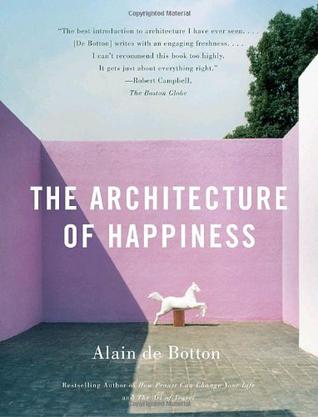
The Architecture of Happiness
From Publishers Weekly With this entertaining and stimulating book, de Botton (How Proust Can Change Your Life) examines the ways architecture speaks to us, evoking associations that, if we are alive to them, can put us in touch with our true selves and influence how we conduct our lives. Because of this, he contends, it's the architect's task to design buildings that contribute to happiness by embodying ennobling values. While he makes no claim to be able to define true beauty in architecture, he suggests some of the virtues a building should have (illustrated by pictures on almost every spread): order combined with complexity; balance between contrasting elements; elegance that appears effortless; a coherent relationship among the parts; and self-knowledge, which entails an understanding of human psychology, something that architects all too often overlook. To underscore his argument, de Botton includes many apt examples of buildings that either incorporate or ignore these qualities, discussing them in ways that make obvious their virtues or failings. The strength of his book is that it encourages us to open our eyes and really look at the buildings in which we live and work. A three-part series of the same title will air on PBS this fall. (Oct. 3) Copyright © Reed Business Information, a division of Reed Elsevier Inc. All rights reserved. --This text refers to the Hardcover edition. From The Washington Post's Book World/washingtonpost.com While happily reading Alain de Botton's graceful musings about architectural beauty, I was suddenly struck by the photograph of the Edgar J. Kaufmann House in Palm Springs, Calif., designed by Richard Neutra in 1946. I turned the page to see what de Botton had to say about it: "The bourgeois couples who lived in Richard Neutra's mid-twentieth-century steel and glass pavilions in California may at times have drunk too much, squabbled, been insincere and overwhelmed by anxiety, but at least their buildings spoke to them of honesty and ease, of a lack of inhibition and a faith in the future." That was all. Odd, I thought. De Botton never points out that this same Edgar J. Kaufmann commissioned the most beautiful private home in America, Fallingwater. He was. Nor, I discovered after checking the index, does he mention its architect, a certain Frank Lloyd Wright. Not once. There's no obvious reason why the author of How Proust Can Save Your Life and The Consolation of Philosophy should leave out Wright. Perhaps he simply decided to challenge himself, to see if he could manage the trick, just as the French novelist Georges Perec once published a perfectly readable novel in which none of the words contain the letter E. Certainly, de Botton otherwise reveals his usual wide learning, lyrically deployed. He discusses the neoclassical influence of Palladio, the impact of Horace Walpole's Gothic extravaganza Strawberry Hill on 19th-century building in Britain, the austere concrete housing of Le Corbusier (who once dubbed his sterile tenements "machines for living"). But mysteriously, almost tantalizingly, he avoids the vastly influential, world-famous Wright, whose houses are so serenely beautiful to look at and yet almost impossible to live in comfortably -- at least if you slouch, have children or collect anything. Not surprisingly, The Architecture of Happiness is itself a carefully designed book, tightly constructed around the photographs that appear on virtually every other page. (Another mystery: Which came first, the images or the text?) There are pictures of castles, cathedrals, office buildings, private homes, bridges, hallways, windows, chairs, ironwork. De Botton visits a theme park in Japan built to resemble 17th-century Amsterdam, shows us a 30-foot-high obelisk memorializing a beloved pig, interprets the monumental elegance of the Royal Crescent in Bath, and discusses both the early modern pursuit of functionality and the ancient Japanese esthetic of wabi, which "identified beauty with unpretentious, simple, unfinished, transient things." Throughout, de Botton argues that the buildings we walk by, work in or come home to affect how we feel. They influence our mood, our sensibility, our very character. No one is likely to disagree with this, especially those of us who dispiritedly sink down into our windowless office cubicles day after day or vainly yearn for just one room, let alone an entire house, like those in Architectural Digest. Alas, much of the time we must simply accept what we are given or settle for what we can afford. For at no point does de Botton seriously address the economics of architecture and interior design. Even if you do it yourself, construction of any kind, especially the highly individualized, is almost prohibitively expensive. This reality, however, doesn't undercut de Botton's essential point: "Buildings speak -- and on topics which can readily be discerned. They speak of democracy or aristocracy, openness or arrogance, welcome or threat, a sympathy for the future or a hankering for the past." In short, "they speak of visions of happiness." De Botton attempts to understand aspects of that happiness by touching on the achievements or failures of particular styles and constructions. He offers us, in effect, a handsome photo album printed on coated stock, augmented by thoughtful, highly polished paragraphs and pensées. Time after time, his descriptions neatly capture the distinctiveness and character of even the most unusual buildings. Admittedly, those who prefer their sentences strictly functional may sometimes judge de Botton's a tad lyrical, just as his mini-essays risk sounding a little gushy. For the most part, though, he keeps his balance, largely through his quiet intelligence, passionate conviction and the charm of a personality lightly tinged with melancholy: "The failure of architects to create congenial environments mirrors our inability to find happiness in other areas of our lives. Bad architecture is in the end as much a failure of psychology as of design. It is an example expressed through materials of the same tendency which in other domains will lead us to marry the wrong people, choose inappropriate jobs and book unsuccessful holidays: the tendency not to understand who we are and what will satisfy us. "In architecture, as in so much else, we cast around for explanations to our troubles and fix on platitudinous targets. We get angry when we should realize we are sad and tear down ancient streets when we ought instead to introduce proper sanitation and street lights. We learn the wrong lessons from our griefs while grasping in vain for the origins of contentment. "The places we call beautiful are, by contrast, the work of those rare architects with the humility to interrogate themselves adequately about their desires and the tenacity to translate their fleeting apprehensions of joy into logical plans -- a combination that enables them to create environments that satisfy needs we never consciously knew we even had." De Botton concludes his book with an even more heartfelt plea: We must strive to build in a manner worthy of the meadows and woods we are destroying. "We owe it to the fields that our houses will not be inferiors of the virgin land they have replaced. We owe it to the worms and the trees that the buildings we cover them with will stand as promises of the highest and most intelligent kind of happiness." Copyright 2006, The Washington Post. All Rights Reserved. --This text refers to the Hardcover edition. From Bookmarks Magazine Alain De Botton, author of How Proust Can Change Your Life, The Art of Travel, and Status Anxiety, among other books, takes a humanistic approach in Architecture of Happiness and explores the ways in which our built environment affects us. He occasionally overindulges in florid prose, but critics agree that his more general observations of architecture are sound and interesting, if not entirely novel. The average reader will find much of interest in the broad range of eras, places, and styles that de Botton discusses. Well-placed photographs illustrate each point in the text. The book is so visual, in fact, that the BBC is making a three-part television series based on it, to air on PBS this fall. Copyright © 2004 Phillips & Nelson Media, Inc. --This text refers to the Hardcover edition. Review “De Botton has a marvelous knack for coming at weighty subjects from entertainingly eccentric angles.” —The Seattle Times "An elegant book. . . . Unusual . . . full of big ideas. . . . Seldom has there been a more sensitive marriage of words and images." —The New York Sun "With originality, verve, and wit, de Botton explains how we find reflections of our own values in the edifices we make. . . . Altogether satisfying." —San Francisco Chronicle "De Botton is high falutin' but user friendly. . . . He keeps architecture on a human level." —Los Angeles Times Product Description The Achitecture of Happiness is a dazzling and generously illustrated journey through the philosophy and psychology of architecture and the indelible connection between our identities and our locations. One of the great but often unmentioned causes of both happiness and misery is the quality of our environment: the kinds of walls, chairs, buildings, and streets that surround us. And yet a concern for architecture is too often described as frivolous, even self-indulgent. Alain de Botton starts from the idea that where we are heavily influences who we can be, and argues that it is architecture's task to stand as an eloquent reminder of our full potential. -
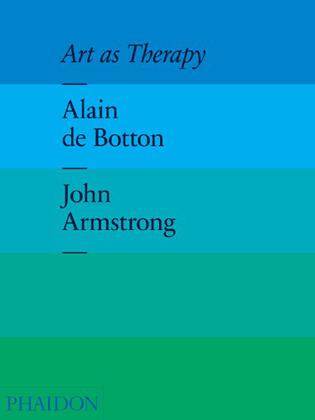
Art as Therapy